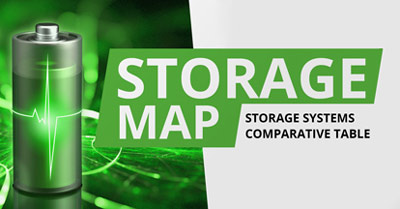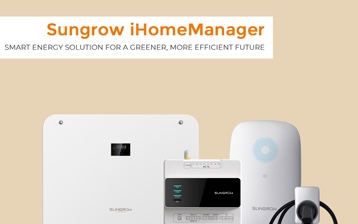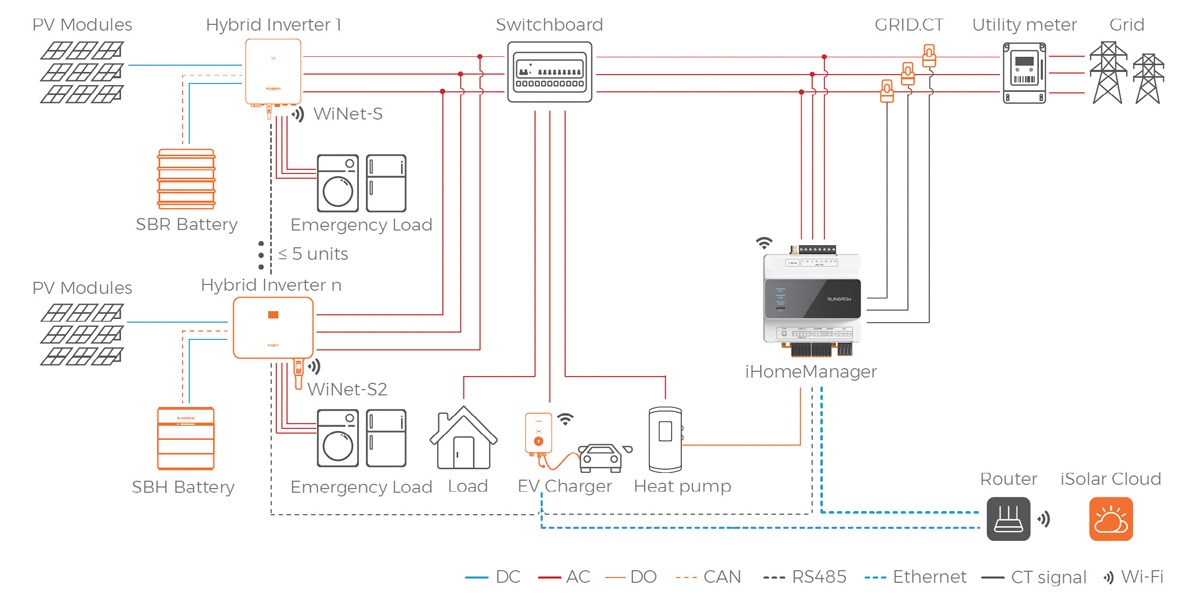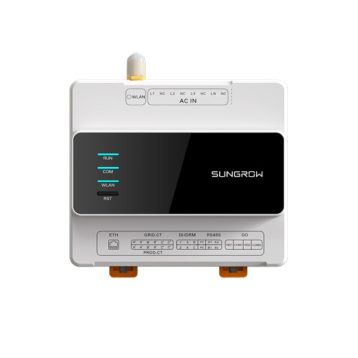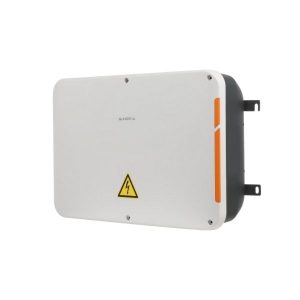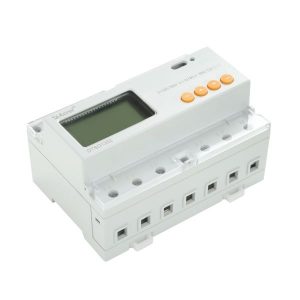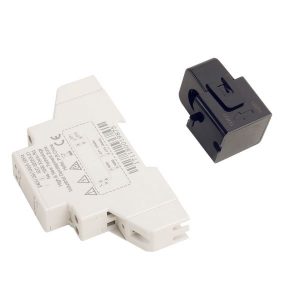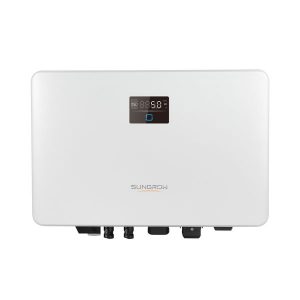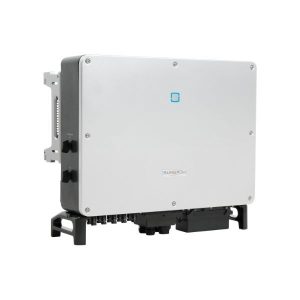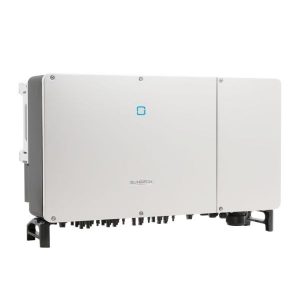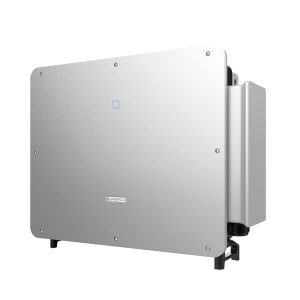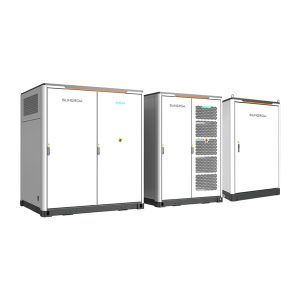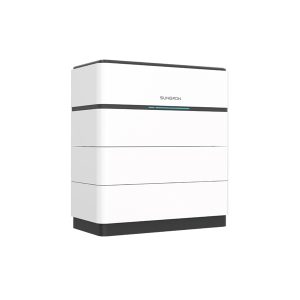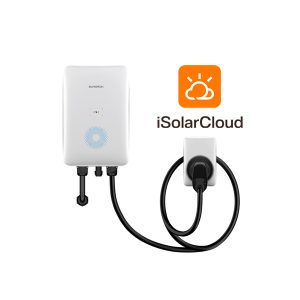The Sungrow iHomeManager is an innovative device designed to simplify and enhance home energy management, offering smart connectivity, system integration, and intelligent savings.
Let’s take a look at the operating modes, connection options, and configurations of the Sungrow iHomeManager.
Easy and unlimited connection for Sungrow iHomeManager
Thanks to its support for both wireless (Wi-Fi) and wired (Ethernet or RS485/WiNet) communication, installing the iHomeManager is quick and easy.
In addition, no extra meter is required thanks to the built-in metering function.
Configuration and connection with other Sungrow products
The device easily integrates multiple energy components, including inverters, batteries, EV chargers, and heat pumps, creating a unified system.
It can connect up to five inverters of the same phase (models SHxxRT, SHxxT, SGxxRT) with a total maximum capacity of 50 kW, as well as a 22 kW AC charger and an SG-ready heat pump.
The EV Charger connects to the iHomeManager via the home router, using either WLAN (Wi-Fi) or Ethernet. Once connected, it is directly managed by the device to ensure optimal performance.
The inverter can be connected to the iHomeManager via an RS485 cable or WiNet, using either WLAN (Wi-Fi) or Ethernet.
For users who wish to add a 22 kW Sungrow AC Charger to a system with SHxxT or SGxxRT inverters, the iHomeManager is required. Only through this device can smooth communication and optimal functionality be ensured.
Sungrow iHomeManager modes
This energy management device offers several modes, including:
- Self-Consumption
- Time-of-Use Plan
- Smart Load
- …and more.
These functions allow users to centralize and optimize their energy management seamlessly, maximizing self-consumption and reducing electricity costs.
The Sungrow iHomeManager settings apply to the entire system. For correct installation, specific configurations on the inverter are also required. Further details will be provided.
Moreover, the Dynamic Tariff feature is expected to be integrated soon, another step forward in flexible energy management.
-
Inverter, Sungrow, Sungrow accessories
Sungrow COM100E – Datalogger
COM100E Sungrow is a datalogger capable of monitoring up to a maximum of 30 devices by connecting them to the iSolarCloud online platform, it can communicate with the latter via RS485, Ethernet and WiFi communication. It can also be installed outdoors thanks to its IP66 certified protection.
SKU: n/a -
-
-
Commercial inverter Sungrow, Inverter, Photovoltaic inverter, Sungrow
Sungrow SG 110 CX
The Sungrow SG110CX 3-phase inverter is an efficient and reliable solution for commercial and industrial PV systems.
- 9 MPPT (2 inputs each)
- Arc fault circuit interrupter (AFCI)
- Built-in DC circuit breaker
- IP66, C5
- RS485, Optional: WLAN, Ethernet
- 5-year warranty (extendable up to 10 years)
SKU: n/a -
Photovoltaic inverter, Residential inverter Sungrow, Sungrow
Sungrow SG 2.0/2.5/3.0 RS-S – 1 MPPT
With a power ranging from 2kW up to 4.5 kW, they are specifically designed for domestic use, this single-phase inverter ensures high efficiency and an intuitive configuration, it also allows intelligent management through 24/7 online monitoring, also guaranteeing a high security level.
- LED digital display
- RS485 / DI communication (ripple and DRM control)
- Connectable to Wifi and via ethernet via the Winet-S module included in the package
- Active and reactive power control and power ramp speed control
- 1 MTTP with provision for a string
- Type II surge protection (both DC and AC)
- Equipped with AFCI
- Max efficiency 98%
- Available sizes: SG2.0RS-S, SG2.5RS-S, SG3.0RS-S
SKU: n/a -
Photovoltaic inverter, Residential inverter Sungrow, Sungrow
Sungrow SG 3.0/3.6/4.0/5.0/6.0 RS – 2 MPPT
 Photovoltaic inverter, Residential inverter Sungrow, Sungrow
Photovoltaic inverter, Residential inverter Sungrow, SungrowSungrow SG 3.0/3.6/4.0/5.0/6.0 RS – 2 MPPT
The SG 3.0/3.6/4.0/5.0/6.0 RS string inverters differ from each other for the maximum output power which varies from 3kW up to 6kW, Sungrow has designed this product for domestic use, it is an inverter single-phase capable of ensuring high efficiency and quick and easy installation.
It also allows intelligent management through 24/7 online monitoring and a high level of security thanks to the implementation of protection systems.
- DC / AC conversion unit with single-phase bridge topology
- LED digital display
- Connectable to the network via Wifi and Ethernet cable
- Active and reactive power control and power ramp speed control
- The SG X.X RS version has only one MPPT, while the SG X.X RS-S version has two
- Available: SG3.0RS, SG3.6RS, SG4.0RS, SG5.0RS, SG6.0RS
SKU: n/a -
Commercial inverter Sungrow, Inverter, Photovoltaic inverter, Sungrow
Sungrow SG 33/40/50 CX
The three-phase string inverters SG 33-40-50 CX are the most suitable choice for companies that will be able to make the most of their photovoltaic system thanks to a maximum efficiency that reaches 98.7%.
- 3\4\5 MPPT
- IP66 (suitable for outdoors)
- Wi-Fi, Ethernet
- 5-year guarantee
- Available models: SG33CX_V112 / SG40CX_V112 / SG50CX_V112
SKU: n/a -
Commercial inverter Sungrow, Inverter, Photovoltaic inverter, Residential inverter Sungrow, Sungrow
Sungrow SG 5.0/6.0/7.0/8.0/10/12/15/17/20 RT
 Commercial inverter Sungrow, Inverter, Photovoltaic inverter, Residential inverter Sungrow, Sungrow
Commercial inverter Sungrow, Inverter, Photovoltaic inverter, Residential inverter Sungrow, SungrowSungrow SG 5.0/6.0/7.0/8.0/10/12/15/17/20 RT
This range of three-phase string inverters produced by Sungrow is ideal for small and medium-sized residential and commercial systems. These inverters are able to offer high efficiency, without sacrificing smart management, making everything safe and easy to use.
- 2 MPPT
- IP65
- Plug and play connector on the AC side and MC4 on the DC side
- Wlan, Ethernet
- Available sizes: SG5.0RT, SG6.0RT, SG8.0RT, SG10RT, SG12RT, SG15RT, SG17RT, SG20RT.
SKU: n/a -
Commercial inverter Sungrow, Inverter, Photovoltaic inverter, Sungrow
Sungrow SG125CX-P2
SG125CX-P2 is a Multi-MPPT string inverter for 1000 VDC systems, optimizes its solutions for the C&I range with 12 MPPT ensures greater flexibility in system design.
- Up to 12 MPPT
- efficiency 98.5%
- IP66 protection and class C5 anti-corrosion grade
- Dynamic shading optimization mode
- Equipped with AFCI 2.0
- DC input of 30 A per MPPT
- Evo2 DC connection – AC connection OT/DT terminal
SKU: n/a -
-
Commercial inverter Sungrow, Inverter, Photovoltaic inverter, Sungrow
Sungrow SG33/50CX-P2
The SG 33/50 CX-P2 three-phase string inverters combine power and safety with a weight reduction of 34% compared to the previous series.
- 3\4 MPPT with 2 inputs each
- Maximum MPPT current: 30 A
- IP66 protection and C5 corrosion resistance
- Integrated DC circuit breaker
- RS485, Optional: Wi-Fi, Ethernet
- Available sizes: SG50CX-P2
SKU: n/a -
Commercial inverter Sungrow, Inverter, Photovoltaic inverter, Sungrow
Sungrow SG350HX
The Sungrow SG350HX three-phase string inverter is an advanced solution for large-scale PV systems, designed to maximize efficiency and ensure safe and reliable operation.
- 12 MPPT (2 inputs each)
- AC output voltage: 800V
- Type II AC and DC SPD
- IP66
- RS485, PLC
- 5-year warranty (extendable up to 20 years)
SKU: n/a
-
Storage Battery, Sungrow
Sungrow PowerStack – C&I Storage
The Sungrow PowerStack is an advanced energy storage system designed for commercial and industrial applications, available in two configurations:
- ST225kWh-110kW-2h: nominal capacity of 229 kWh and nominal power of 110 kW
- ST455kWh-110kW-4h: nominal capacity of 458 kWh and nominal power of 110 kW
SKU: n/a -
Storage Battery, Sungrow
Sungrow SBH 100-400 – HV battery
Sungrow SBH100-400 represents a reliable and versatile energy storage solution, combining high power, advanced safety and modular flexibility.
- Single module capacity: 5 kWh
- LFP batteries
- Stackable system (up to 8 modules in parallel)
- IP55
- 10-year warranty
SKU: n/a -
Storage Battery, Sungrow
Sungrow SBR – high voltage – from 6.4 to 25.6 kWh
High voltage lithium iron phosphate LFP batteries, modular and expandable at any time, with 10 years warranty.
- They can charge and discharge with a maximum current of 30A
- Equipped with a charge status indicator
- IP55, can be installed both indoors and outdoors
- Protection from abnormal voltages and currents
- Available sizes: SBR064 / SBR096 / SBR128 / SBR160/ SBR192 / SBR224 / SBR256
SKU: n/a



